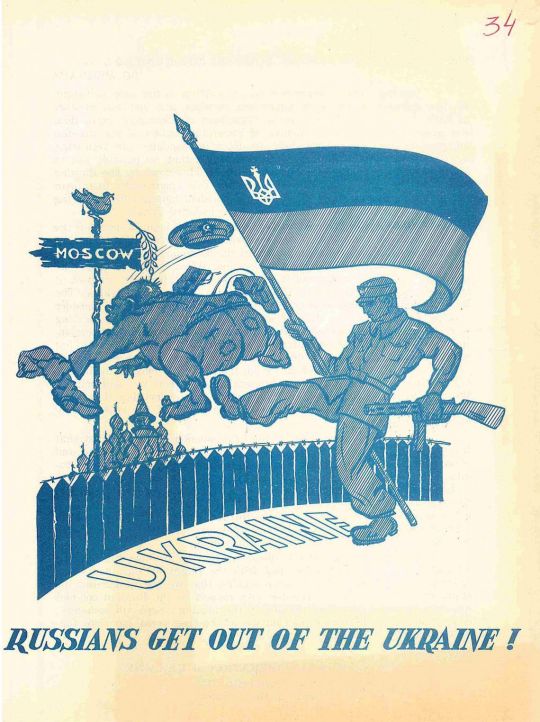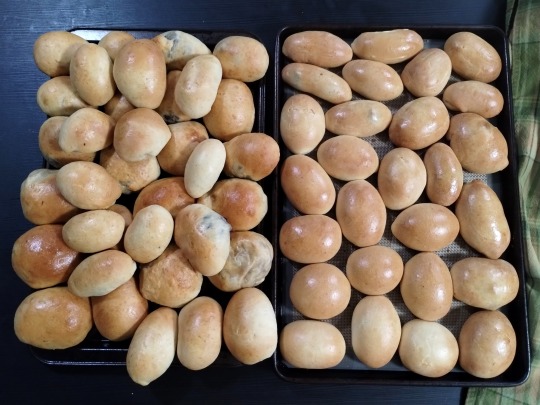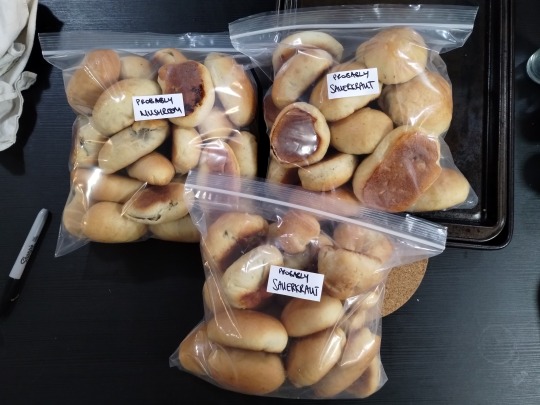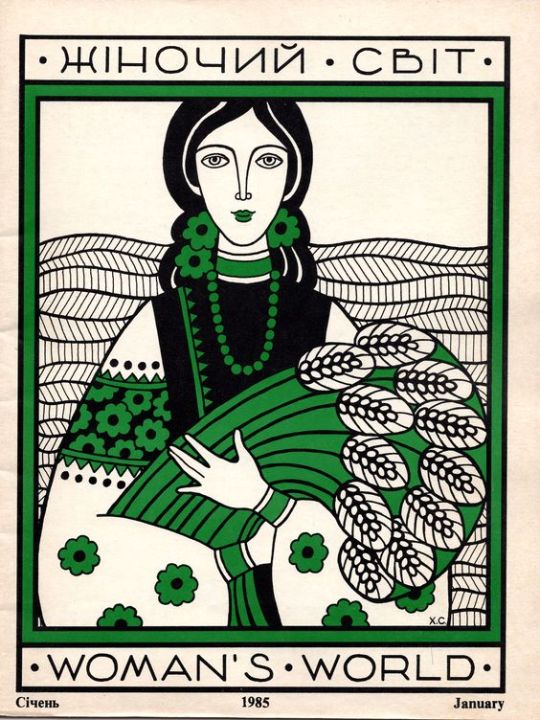#ukrainian canadian
Text
not that Ukrainian-Canadians are an particularly oppressed group of people within modern Canada, but the insinuation of TIFF receiving threats when the police say they have no knowledge of them does play on unfortunately common trope of leftists and supposed progressives here making out our community to be violent nazi corroborators who conspire against them to uphold our tyranny (when really it is well within the rights of all canadians to protest and to question where our tax-dollars are going, and say we don’t want them paying for a goddamn propaganda film)
Not that I’m surprised or anything, it is like russians to cry while hitting you, and like western leftists to play “intellectual” while white washing a genocide
108 notes
·
View notes
Photo

Postcard printed by the Association for Liberation of Ukraine, Toronto, 1962
#Association for liberation of Ukraine#ukrainian postcard#vintage postcards#Toronto#Ukrainian Canadian#Canada#Ukrainian diaspora#Ukrainian art#Ukrainian graphic#1960s
765 notes
·
View notes
Text
In the 40s/50s there was a lot of racism toward Ukrainians, and my second cousin was struggling to find a job. His mother suggested he consider changing his name from Stelmaschchuck.
He thought for a moment and said "Yes. I'm going to add "ski" to the end of my name.
*Ukrainian intensifies*
4 notes
·
View notes
Text
I learned how to make pyrizhky from a friend using this recipe* from Traditional Ukrainian Cookery by Savella Stechishin (this book is a national treasure btw).
* the online recipe is undoubtedly copied from Traditional Ukrainian Cookery; but in book, the amount of yeast is "1 package" (which is about 2.25 teaspoons); yeast enhancers are omitted; and the original salt is 1.5 teaspoons.
And then I made a metric shit tonne of pyrizhky:

But I also lost track of what fillings went where, so we'll call it Ukrainian Roulette:

Fillings:
Mushroom
Sauerkraut (which may also contain farmer's sausage)

The recipe below is copied directly from the Ukrainian Classic Kitchen forum link above:
Pyrizhky are well-liked pastries with a filling. Pyrizhky are usually made of yeast-raised dough but for important occasions, puff pastry or short pastry may be used.
1 teaspoon sugar
1/4 cup lukewarm water
1/4 teaspoon powdered ginger or pinch of citric acid (vitamin C) or both as a dough enhancer (optional)
1 Tablespoon active dry yeast
1 cup scalded milk
1/4 cup butter or shortening or oil
2 eggs, beaten
1 teaspoons salt
1/4 cup sugar
4 1/2 to 5 cups sifted flour
To make pyrizhky, cut off small egg-sized pieces of dough, flatten each or roll 1/4 inch thick. Place a generous portion of the filling in the center, bring the edges together, and press to seal securely -- All edges must be free of filling.
NOTE: (I wet the edges with beaten egg white for a better seal and with well floured fingers seal the dough). I then roll the pyrizhky between my palms and seal again with well floured fingers at the seam again -- this prevents the pyrizhky from opening (double sealing).
Shape into an oblong with a plump center and tapering ends and place sealed side down on a well buttered parchment lined pan. This is the traditional shape of pyrizhky.
As an alternative method, the dough may be rolled 1/4 inch thick, cut into squares, filled, and sealed as directed.
Place, sealed side down, on a greased baking sheet, spacing them 1 to 1 1/2 inches apart. Cover and let them rise in a warm place until light, for about 1 hour.
Brush them with a beaten egg diluted with 2 tablespoons of water or milk. Bake in a moderate oven on the second level (375°F) for 30 to 35 OR (350º F. ) on the first level for about 25 to 35 minutes depending on their size. Makes about 22 to 24.
COOKED MEAT FILLING: (Nachinka z varenoho abo pechenoho miasa.
Use any kind of cooked ground meat (pork, veal, beef, chicken). Combine the meat with a chopped or grated onion, cooked in butter or bacon fat. Butter gives a much better flavour. Add a little gravy to moisten the mixture sufficiently. Season to taste with salt and pepper. If desired, a small quantity of any one of the following may be added: Cooked rice, chopped cooked mushrooms, hard cooked eggs, chopped fine. For additional flavouring, parsley or dill may be used.
MEAT FILLING:
1 medium onion, chopped fine
4 tablespoons butter (divided)
1 pound ground beef, or half pork and half beef, or even left over cooked meat
1/2 teaspoon salt
Pepper to taste
1 tablespoon flour
1/2 cup stock or water
1 teaspoon chopped parsley
2 hard cooked eggs, chopped
Cook the onion in half of the butter until it is tender. Add the remaining butter and the meat. Brown the meat lightly. Season with salt and pepper. Cover and cook over a low heat until done. Remove the meat. Stir the flour into the drippings. Add the soup stock or water, then cook, until the sauce comes to a boil. Combine with the meat and cool. Mix in the parsley and chopped eggs. For the above recipe I used leftover meat which I chopped up and added the same ingredients as above for meat filling.
SAUERKRAUT FILLING:
If you wish you can add other ingredients to your kapusta. Sometimes I add a handful of seedless raisins, grated carrots, a teaspoon of brown sugar or fried mushrooms. I like to use half and half olive oil and butter for the fat.
1 1/2 to 2 quarts sauerkraut
1 large onion, chopped fine
4 to 5 tablespoons fat
Salt and pepper.
Rinse the kraut well in warm water, squeeze dry, and chop finely. Cook the onion in the fat until tender. Add the kraut and cook it for about 15 minutes, or until the kraut is tender but not overcooked. Season to taste with salt and pepper. For a mild flavored filling, add some fresh cabbage that has been cooked, squeezed dry, and chopped. This filling should be dry.
COTTAGE CHEESE FILLING:
Press the cottage cheese through a sieve or mash it well. Add the remaining ingredients and mix thoroughly. Use with a yeast-raised dough.
MUSHROOM FILLING:
2 pounds mushrooms
1 onion, chopped fine
4 tablespoons butter
1/3 cup sour cream
1 cup soft bread crumbs
1 tablespoon chopped dill
2 hard cooked eggs, chopped
1/4 teaspoons salt
Pepper to taste
Clean and wash the mushrooms. Cook the wild variety of mushrooms in boiling water for 5 minutes and then drain thoroughly. Cultivated mushrooms need not be boiled. Chop the mushrooms very finely. Cook the onion in the butter until tender. Add the mushrooms and cream; cook over a low heat for 15 minutes. Stir in the remaining ingredients. Season to taste and cool the mixture. If the filling is crumbly, a raw egg may be added. This filling is good with a short pastry.
LIVER FILLING:
1 pound veal liver, sliced
1/4 pound bacon, sliced
1 onion, ground
1/2 cup soft bread crumbs
1/3 cup milk
Salt and pepper
Scald the liver, drain, and remove the membrane. Cook the bacon until crisp and remove it from the pan. Cook the liver and onion in the hot bacon fat until the liver is browned on both sides and the onion is tender. Grind the liver, onion, and bacon. Soak the bread crumbs in the milk and combine with the liver mixture. Season to taste with salt and pepper. an egg may be added to this mixture, if desired. Chill the filling when using it with a short pastry.
GREEN ONION FILLING:
4 cups green onions, cut fine
3 tablespoons butter
1/2 cup chopped dill
3 hard cooked eggs, chopped
1/4 teaspoon salt
Pepper to taste
Cook the onions in the butter until wilted. Stir in the dill and cook for 1 minute. Remove the onions from the range, add the eggs, and season to taste with salt and pepper. Use this filling with yeast-raised dough.
CABBAGE FILLING:
1 large head cabbage
1 tablespoon salt
1 onion, chopped
1/3 cup butter
1 tablespoon lemon juice
Salt and pepper
2 hard cooked eggs, chopped
Shred the cabbage very finely, sprinkle with salt, and let it stand for 15 minutes. Squeeze it dry. Cook the onion in the butter until tender. Add the cabbage and cook until it is tender but not overcooked. Mix in the lemon juice. Season to taste with salt and pepper. Stir in the hard cooked eggs. If desired, some chopped, cooked ham or chopped, cooked mushrooms may be added to this filling in place of eggs. Use the filling with yeast-raised dough or short pastry. Allow a generous portion of the filling when making pyrizhky because cabbage settles in baking.
SAVORY CHEESE PYRIH:
Prepare 1/2 recipe of yeast-raised dough for Pyrohy and Pyrizhky, or use bread dough when making bread. Use Cottage Cheese Filling and add to it about 1/2 teaspoon of caraway seed, if desired. A tablespoon of grated, mature onion may be used in place of the green onions. The cheese should be delicately flavoured with onion.
Roll the dough 1/2 inch thick to fit a 10 x 15 inch baking pan. Butter the pan and place the dough in it. Cover and let it rise until almost double in bulk. Spread with the cheese filling and sprinkle the top with melted butter. Cover and let it rise for about 20 minutes. Bake in a moderate oven (375 degrees F.) for 30 to 35 minutes. Cut into squares and serve warm.
COTTAGE CHEESE ZAVYVANTSI (rolls):
Prepare the dough as for Pyrohy and Pyrizhky or use bread dough when making bread. Prepare Cottage Cheese Filling. Some chopped green onions may be added to the filling, if desired. Roll the dough 1/4 inch thick, keeping it in a long and narrow rectangle. Spread with the filling and roll it up like a jelly roll. Seal the edges. Cut into 1 inch pieces. Dip each piece in melted butter and place, cut side up. in a buttered baking pan or buttered muffin pans. cover and let them rise in a warm place until light. Bake in a moderate oven (375°F.) for 30 to 35 minutes, or until done. Serve warm.
ONION ROLLS:
Prepare the dough as for Pyrizhky. Roll the dough 3/4 inch thick and cut out rounds with a large cookie cutter. Sprinkle the top of each round with a finely chopped onion. Press the onion pieces into the dough. Place the rolls on a greased baking sheet and brush with melted butter. Let them rise until very light. Bake in a moderate oven (375°F.) for about 25 minutes, or until done. Serve warm with soup or coffee.
NOTE: If you have a bread machine you can make this dough recipe http://www.ukrainianclassickitchen.ca/index.php?topic=8457.msg9323#msg9323
SHORT PASTRY FOR PYRIZHKY:
2 cups sifted flour
1/2 teaspoon salt
1/2 cup plus 2 tablespoons butter or shortening
1 egg yolk
2 teaspoons lemon juice
3 to 4 tablespoons ice water
All the ingredients should be very cold. Fillings should be cold. Sift the flour with the salt. Cut in the butter or shortening with a pastry blender until the mixture resembles a coarse meal. Combine the yolk with the lemon juice and water. Sprinkle the liquid over the flour and mix lightly until the dough holds together. Chill thoroughly. Roll the dough 1/4 inch thick and cut into squares or rectangles of the desired size. Have the filling ready. Place a portion of the filling in the centre, bring the edges together, and seal in a neat ridge along the centre. Place, sealed side up, on a greased baking sheet. Brush with a beaten egg diluted with 2 tablespoons of water or milk. Bake in a hot oven (400°F) for 15 to 20 minutes.
#food#recipe#savella stechishin#Traditional Ukrainian Cookery#Ukrainian cuisine#Ukrainian food#pyrizhky#pyrizhok#pyrohy#sauerkraut#pyrizhky rampage#Canadian cuisine#Canadian heritage#Canadian history#Ukrainian Canadian#Ukrainian Canadian history#Ukrainian roulette
2 notes
·
View notes
Text

I will be selling some of my eggs at the BC Ukrainian Cultural Festival on May 6, 2023
www.bcuf.ca
www.facebook.com/bcucf
#bcucf#bc Ukrainian cultural festival#british columbia#canada#ukraine#ukrainian in bc#ukrainian canadian#mission bc#fraser valley#greater vancouver#things to do in bc#cherspysanky#pysanky#pysanka#may 6 2023
3 notes
·
View notes
Text

William Kurelek (Canadian/Ukrainian , 1927–1977) - Grizzly Sliding Down Glacier
291 notes
·
View notes
Text




"3000 people stood against russia at their consulate in Toronto… Разом до перемоги!"
— A rally in support of Ukraine in Toronto, Ontario, Canada (via UCC Toronto)
#Ukraine#rally#Russia#Toronto#russia is a terrorist state#quote#UCC Toronto#Ukrainian Canadian Congress
39 notes
·
View notes
Text

A Roshel Senator MRAP which encountered an 8kg anti tank mine. Despite significant damage the vehicle worked as intended and the soldiers onboard at the time survived without injury. May 2024.
16 notes
·
View notes
Text
international Miku is so beautiful
#I wanna do them for some of my cultures#but sadly I don't know enough about them#I could to Ukrainian canadian#but I think I'm gonna try Saskatchewan miku#art#leo txt
8 notes
·
View notes
Photo

Rezz (Isabelle Rezazadeh)
Gender: Female
Sexuality: Lesbian
DOB: 28 March 1995
Ethnicity: Ukrainian, Iranian
Nationality: Canadian
Occupation: DJ, record producer, musician
#Rezz#Isabelle Rezazadeh#lesbianism#lgbt#wlw#female#lesbian#1995#Ukrainian#iranian#biracial#middle eastern#asian#poc#canadian#dj#record producer#musician
107 notes
·
View notes
Text

Yana Movchan
Ukrainian-Canadian, b. 1971
Still Life with Turtle Doves
Oil
28×22 in
#Yana Movchan#ukraine#canada#ukrainian artist#canadian artist#turtle doves#still life#oil painting#painting#bird art#flowers#floral#flowercore#birdcore#peace for ukraine
5 notes
·
View notes
Text
out of some curiosity (and a desire to procrastinate) I have a poll on some WW1 Canadian history for you guys
in case anyone wants to know what I’m talking about
125 notes
·
View notes
Photo

The cover of the January issue of the Ukrainian-Canadian magazine Woman`s World by Chrystia Senkiv, 1985
#vintage magazine#Chrystia Senkiv#Ukrainian art#Ukrainian graphic#Ukrainian press#Ukrainian Canadian#Ukrainian diaspora#1980s
225 notes
·
View notes
Text
"The SDPC [Social Democractic Party of Canada] at the Lakehead appears not to have been content merely to contest elections. In 1912, having recently formed a union, the mostly immigrant workers of the Canadian Northern Coal and Ore Dock Company went on strike for better wages, hours, and working conditions. Bloodshed resulted when company officials, using local police and the militia, tried to suppress the striking coal handlers. The chief of police, two constables, and two Italian strikers were wounded. Fearing a general strike, the CNR quickly acquiesced to the demands of the coal handlers.
There was much in this incident that recalled earlier labour strife at the Lakehead. A new element, however, was the growing influence of radical socialists, who were thought to have sway over the coal handlers and to have been instrumental in their inclusion in the trade union movement. Prominent among the activists were “members of the Social Democratic Party of Canada,” including the party’s organizers for Port Arthur and Fort William, the Cobalt miners’ union leader James P. McGuire and the Reverend William Madison Hicks, as well as Herbert Barker, a volunteer organizer for the AFL. In April 1912, the three men led a number of English-speaking socialists in Fort William in establishing Ontario Local 51 of the SDPC. Initial members also included W.J. Carter; an architect named Richard Lockhead; Sid Wilson, a member of the British-based Amalgamated Carpenters; and Fred Moore, owner of the printing press that printed Urry’s The Wage Earner. Significantly, most of the members appear to have been Finnish or Ukrainian.
Before the strike, members of the Fort William SDPC had spoken at meetings of the coal handlers and, in the case of Hicks, played an active role by leading a parade of workers in confronting Port Arthur mayor S.W. Ray on his way to read the Riot Act to the strikers. The meeting between the two men and the violence that ensued were coincidental, according to Morrison, as
the Social Democratic party posed no real or imagined menace to the citizens of Port Arthur … what alarmed the English-speaking community was the newly won influence of the socialists with the immigrant workers.
Supporters of the ILP [Independent Labour Party] of New Ontario such as Urry found themselves “at odds with radical socialism” as
not only had the socialists played a prominent part in the strike,
though not the riot, but they were also attempting to organize Thunder Bay’s entire waterfront.
...
Calls for Hicks’s arrest began to appear in newspapers in both cities and the surrounding countryside. On 1 August 1912, officials arrested him for his role in a “tumultuous assembly … likely to promote a breach of the public peace.” Shortly after Hicks’s arrest and conviction (although he received a suspended sentence), SDPC organizers began an active campaign to take control, or at the very least undermine, the ILP-led Trades and Labour Councils. Following the strike, they sought to stage a general strike on the waterfront and, ideally, spread it throughout both Port Arthur and Fort William. As Jean Morrison writes, however, this was “a move disparaged by the British labour men for its disregard of the law which required negotiations and conciliation preceding strikes by transportation workers.” The attempt failed and widened the rift formed during the municipal, provincial, and federal elections of 1908 and 1911 and the labour unrest earlier in 1912.
...
The SDPC was also not left untouched. In preparation for the 1913 Fort William civic election, Urry and Hicks jointly developed in opposition to the SDPC a manifesto describing the class struggle in general and the issues facing the region’s workers in particular .... On the recommendation of the Elk Lake, Porcupine, and Cobalt locals that Hicks be expelled, the matter was referred to the Fort William membership. Despite facing the possibility that its charter would be revoked, Local 51 refused to expel Hicks and launched a vigorous defence on his behalf. The convincing agitator had a coterie of true believers, who “defended him to the last ditch refusing to believe that Hicks would do anything wrong.” He also had his critics, evidently including the 400-strong Fort William branch, which, it appears, sided with the Dominion Executive and expelled Hicks.
...
With Hicks departed one highly personalized version of a response to the ambiguous legacy of Lakehead socialism. Both the ILP and the SDPC grew rapidly during 1913. The labour councils in the twin cities began to discuss unity, in the form of construction of a joint Central Labour Temple. The Finnish branch of the SDPC in Port Arthur also called out for working-class and socialist unity. Moreover, as a more tangible indication of potential unification of the socialist and labour movements, SDPC organizer Herbert Barker was elected president of the Port Arthur Trades and Labour Council in April 1913.
As so often proved to be the case, however, such incipient unity was challenged by the region’s sheer class volatility. The strike by street railway workers in May 1913 was a volcanic moment. As David Bercuson writes:
The walk-out provided a focal point for much of the hatred and bitterness that had developed between labour and its enemies in the twin cities for several years.
Rioting and violence were sparked by the CPR’s attempts to use strikebreakers. When strikers overturned a streetcar operated by strikebreakers, police arrested one of the participants and, when a crowd tried to get him out of jail, fired into the crowd, killing a bystander. Local newspapers tried to pin the violence on the socialists, who were allegedly responsible for agitating the crowd.
The railway workers belonged to the Trades and Labour Councils in both cities and, in a show of solidarity, both councils called for a general sympathy strike. These calls went unheeded and most workers returned to work after four days of protest. In response, Urry, James Booker, McGuire, Bryan, and many members of the SDPC met at the Finnish Labour Temple. They criticized the local trades and labour councils “for not being radical enough to resist the ruling of an unscrupulous upper class.” They hoped the councils would become “more radical.” Not surprisingly, the obviously inflamed right-wing media in the twin cities characterized the meeting as one of “sedition, anarchy, socialism, violence and most everything else calculated to worry orderly society and responsible government.”
It was not a critique of the Lakehead workers reserved for the mainstream press. Mayor John Oliver of Port Arthur summed up the situation well when he argued that the continued unrest in Port Arthur and Fort William was not wholly due to working conditions. Making specific mention of the strikes of 1909, 1912, and 1913, he suggested that the unrest had been the result of socialist agitators. Oliver wrote:
There is hardly a night in the week that inflammatory speeches have not been made by several agitators … something will have to be done to either remove them or check their actions.
Interestingly, Frederick Urry and J.P. McGuire were specifically named for their alleged advocacy of a general strike. McGuire was further singled out for his reputed suggestion that it would be an easy thing to cut telephone, telegraph, and electric lines."
- Michel S. Beaulieu, Labour at the Lakehead: Ethnicity, Socialism, and Politics, 1900-35. Vancouver: University of British Columbia Press, 2011. p. 37-38, 40-42
#thunder bay#fort william#port arthur#strike#freight handlers#railway workers#immigrant workers#street railways#immigration to canada#canadian socialism#anglo canadians#xenophobia in canada#finnish immigration to canada#ukrainian immigration to canada#coal handlers#northwestern ontario#reading 2024#academic quote#labour at the lakehead#working class history
4 notes
·
View notes
Text
On at least one occasion, Matt has woken up, wandered into the kitchen like the ghost of a Victorian child, flicked on the lights and had a minor crisis. He's picking everything up and squinting at it because he can't read anything. How many rips did he take off the bong he can't remember getting out last night? Then he finally wakes up enough to realize he's not brain-damaged or baked, it's just all in Ukrainian and Polish because Katya did the shopping last. And he can read it.
#katya and matt || the soil of our souls#matthew || my country is winter#katya || бо лишало на серці сліди#This post is brought to you by the fact I have Ukrainian loved ones#and I can't read half the fucking products in my kitchen rn#because a new polish store opened up nearby#canadian household these days is like#slavic groceries#french health and beauty and taiwanese bubble tea#japanese crockery muah love you muji#british condiments#indian and arabic spices#taiwanese stationary
34 notes
·
View notes
Text
🇨🇦🤡 Clown Prime Minister of Canada Justin Trudeau on the celebration 🎉 of a literal Nazi in the Canadian Parliament: It's Russian Propaganda! Russia, Russia, Russia!!!
And still no one asks what this Ukrainian Nazi was doing in Canada in the first place. Canada fought the Nazis in WWII and then it seems, took those Nazis in as refugees after the war.
Special Thanks for the video to: DD Geopolitics
#nazi celebration#canadian parliament#justin trudeau#ukrainian nazis#nazis from Ukraine#geopolitics news#geopolitical news#geopolitical events#geopolitics#international affairs#international news#international politics#politics#news#world news#global news#dd geopolitics#socialism#communism#marxism leninism#socialist politics#socialist news#socialist#communist#marxism#marxist leninist#workersolidarity#worker solidarity#WorkerSolidarityNews#canada news
11 notes
·
View notes